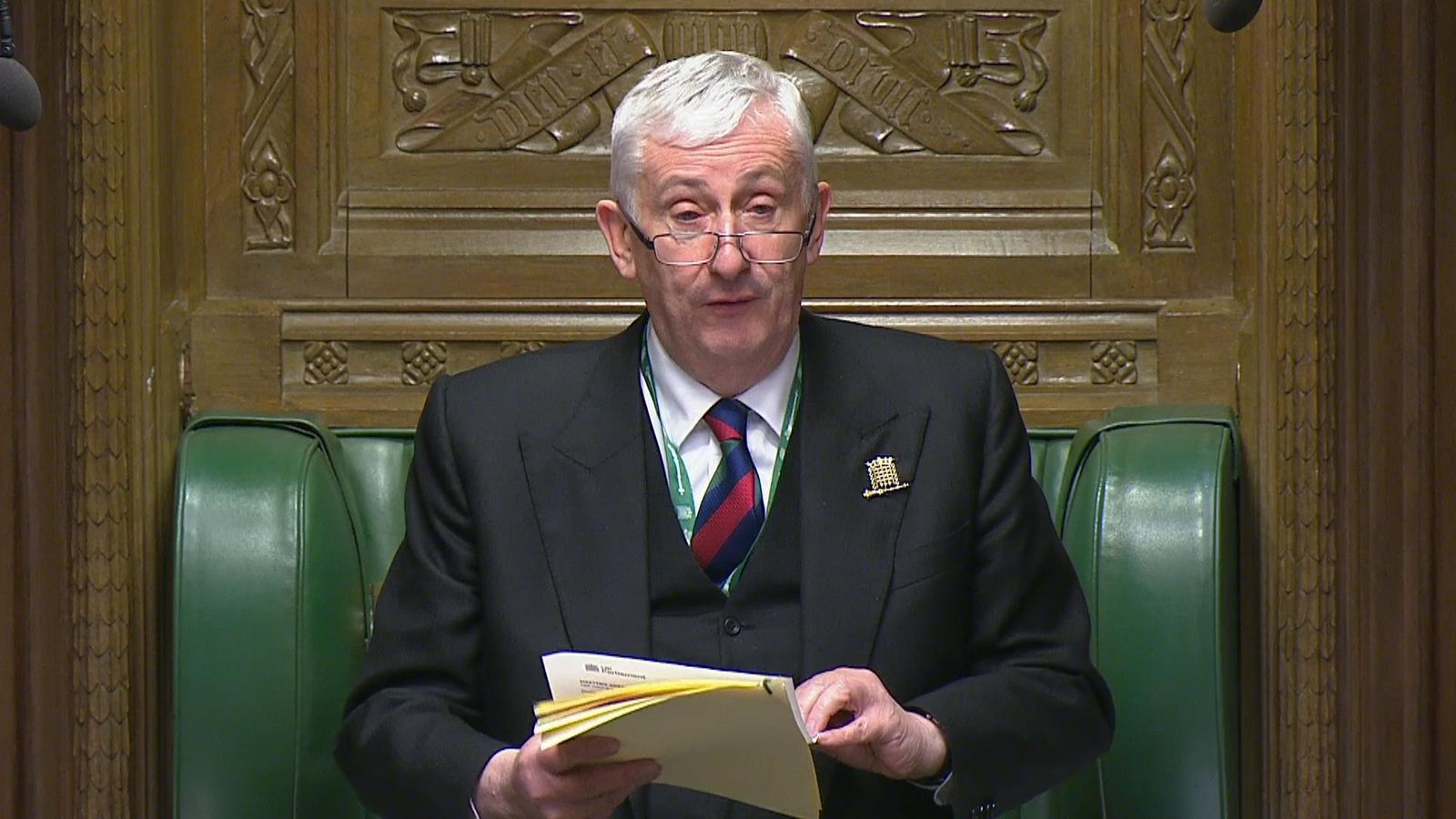Commons speaker Sir Lindsay Hoyle is facing a backlash from Tory MPs over his decision to select both the Labour and government amendments to the SNP’s Gaza ceasefire motion.
It is highly unusual to allow an opposition party – in this case Labour – to amend a motion from another opposition party. Usually, only a government amendment would be selected in such a vote.
Advice from the clerk of the House said the decision to select both “represents a departure from the long-established convention for dealing with such amendments on opposition days”.
But the letter said Sir Lindsay ultimately has discretion over what amendments to select.
Sir Lindsay, who was first elected as a Labour MP but relinquished his party affiliation to become the Speaker, said that he wanted MPs to have the “widest possible range” of options in the Gaza ceasefire debate because of its importance.
Politics Live:
Reaction to Speaker’s choice and vote updates
But Tory MPs have accused him of making an “overtly political decision”, given that Sir Keir Starmer was expected to face a significant rebellion had his amendment not been selected.
This might have led to Labour MPs backing the SNP’s motion calling for a ceasefire against Labour’s orders.
One Tory MP told Sky News: “Nobody wants a return to the Bercow days. The Speaker has done lots to rebuild trust over the past years.
“Today’s overtly political decision from the Speaker will cause a loss of confidence from Conservative MPs.
“The question now is can he retain the confidence of the House and continue?”
The mention of Bercow harks back to the speakership of John Bercow.
He was Speaker during the Brexit years and came in for criticism for making what were perceived as political interventions to allow MPs to delay or scrutinise proposed Brexit deals.
He was later found guilty of bullying House of Commons staff and banned from parliament.
Labour had not said how it would whip its MPs if its amendment was selected, but it was expected they would be told to abstain.
A source told our political editor Beth Rigby that Sir Keir faced resignations from shadow cabinet members had the Labour amendment not been called and up to 80 MPs were ready to rebel.
There is not actually a huge difference between Labour and the SNP’s position.
Both are calling for an “immediate ceasefire” and the release of hostages, but the wording of Labour’s amendment has a greater emphasis on the role of Hamas – as well as Israel – in bringing about a lasting end to the fighting.
Read More:
Former Speaker banned from parliament for life after bullying inquiry finds him guilty
Labour announced its motion yesterday, after months of pressure over its position on the war.
Previously the Labour leadership had refrained from calling for an immediate ceasefire, choosing language such as a “sustainable ceasefire” or “humanitarian pauses” instead.
This led to eight shadow ministers resigning in November, so they could support a previous SNP amendment calling for a ceasefire.
The government amendment, which will be voted on if the Labour amendment falls, states that ministers want an “immediate humanitarian pause” in the fighting before supporting “moves towards a permanent sustainable ceasefire”.
This breaking news story is being updated and more details will be published shortly.
Please refresh the page for the fullest version.
You can receive Breaking News alerts on a smartphone or tablet via the Sky News App. You can also follow @SkyNews on X or subscribe to our YouTube channel to keep up with the latest news.
